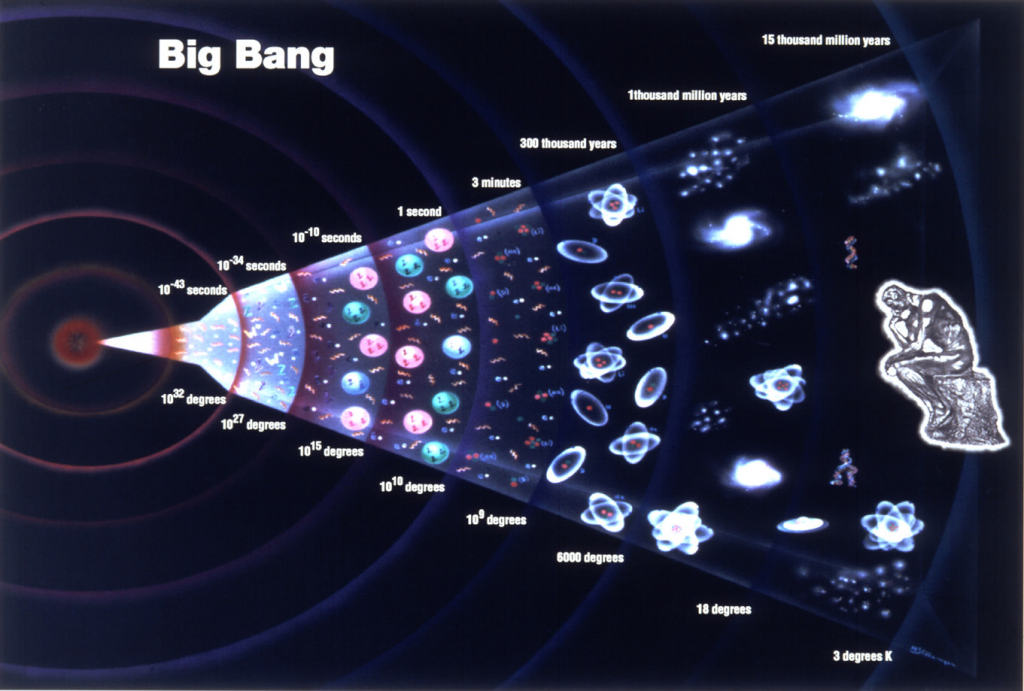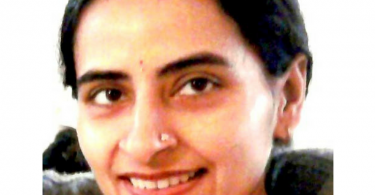Author: Prof. (Dr.) Goutam Das M. D. (Homoeopathy)
[Abstract: This article deals with integrative study of Vital Force, Vital Principle and Simple Substance with the understanding of the concept of Life and its significance in modern Science and Homoeopathy, on the light of the teaching of Organon of Medicine & Homoeopathic Philosophy that, the Life and its meaning, origin, growth, development, mechanism of action, maturity, and it’s end, are also expressed in this article.]Keywords: Physical World – Life-philosophy – science – physics – chemistry – mathematics – biology – homoeopathy – Vital Force – Vital Principle – Simple Substance.
Introduction: [1]Life is refer to the period of an on-going process of living things from the conception; the very condition of an entity that has been born and death of an organism, that has yet to die; and which makes a living thing alive. Life has been exhibit all or at least once during their existence like:
- Growth, development and full maturity.
- Metabolism, absorption, and excretion.
- Motion, itself or internal.
- Reproduction, create similar yet separate form of it.
- Response to stimuli, to its surrounding environment, accordingly and harmoniously.
Definition: Life is the invisible, substantial, intelligent, individual, co-or-dining power and cause directing and controlling the forces involved in the production and activity of any organism possessing individuality. [2]
Origin of Life: [3]
There is no ‘standard’ model, many hypotheses taken from simple organic molecules to proto-cells and metabolism. ‘Genes-first’ or the ‘metabolism-first’ category, but the emergence of hybrid models is a recent trend.
- Pre-biotic conditions create the basic small molecules of life; by Urey-Miller experiment.
- Phospholipids spontaneously form lipid bilayers, the basic structure of a cell membrane.
- Random RNA molecules can produce ribozymes, able to produce more of themselves under very specific conditions.
Concept of Physical World: [4]
Physical means relating to the world of matter and energy and its study or may tell natural philosophy Dictionary. World means the earth or the earth and its inhabitants.
- The earth and its components such as soil, rocks, air, water, matter, energy, plants, animals, micro-organisms etc. together constitute the physical world.
- The physical world is maintained by some universal laws, which are uniform and harmonious.
- Homoeopathic law of cure is a derivation of natural law of cure, which is also a law of physical world.
- Scientist by their knowledge uses the law and solves various problems for the betterment of mankind.
There are two popular theories on the origin of the earth:
- The ‘Big Bang’ theory of Edwin Hubble.
- Black Hole theory by Stephen Hawkings.
The Universe was begun in one small lump. Due to a massive explosion, called ‘Big Bang’, energy blew, particles of matter came out into the space and produce incredible hot fireball, and after cooling hydrogen, helium made up with the material together to form galaxies, stars.
- Sun is an ordinary yellow star formed within the ‘milky way’ galaxy.
- Materials around it made up a rotating disk, as bits of dust, circle around the new-born Sun, they collided and slowed down.
- Pieces of dust and rock came together and form large and larger lumps which formed the four rocky inner planet of the solar system with earth.
Images of Black Hole and Big Bang (Images.app.goo.gl)


Philosophers’ views on Physical world: [5]
Rene Descartes: He divided the world into two independent and separate realms.
- There are realm of mind and realm of matter.
- The external matter, which is in the province of science for investigation and the realm of mind in philosophy.
Aristotle: Universe has a beginning with Divine Intervention.
- Universe had existed and would exist forever.
Paracelsus: He first speaks man as a ‘micro cosmos’ and the world around as ‘macro cosmos’.
Lovelock: He was an atmospheric chemist, had an idea that the planet earth as a whole is a living, self-organising system.
Scientific views of world: [6]
Newton: He developed a complete mathematical formulation of the mechanistic view of nature. He invented differential calculus to describe the motion of solid bodies.
- According to him the Universe where the physical phenomena going on were the three-dimensional space of Classical Euclidean Geometry.
- It was absolute space, an empty container, was independent for occurring physical phenomena.
- Elements of the physical world which moved in this absolute space and absolute time were material particles.
- His mechanistic study we see, in small atomic and subatomic physics and in large astro-physics and cosmology.
Einstein: Theory of Relativity, a series of events into a single unified spatio-temporal entity; where time and space together is a four-dimensional space-time continuum.
- Quantum mechanics deals with atomic phenomena, microscopic event, determined by their connections to the whole and is closely related to the fundamental role of probability.
- Newtonian classical physics deals with an event of unknown, the macroscopic event.
Heisenberg: He discovered that there are limits beyond which we cannot measure accurately, at the same time, the processes of nature.
- Hence, his discovery becomes to be known as the ‘Uncertainty Principle’, means we are adjusting a moving picture that is slightly out of focus.
David Bohm: His view is the notion of ‘Unbroken Wholeness’, to express the dynamic nature of reality at this level he used the term ‘holo-movement’.
- In his view, holo-movement is a dynamic phenomenon out of which all forms of material universe flow.
Vedic concept of Physical world: [7]
It’s made up of five elements:
- Earth, the solid matter.
- Water, the liquid matter.
- Fire, the radiant energy.
- Air, the gases.
- Sky, the ethereal substances.
‘Prayan’, acts upon the Sky and creations started.
Life & Science: [8]
Physical science has come to regard all matter as a “condensation” of the universal, intangible, interatomic ether, which is thus acknowledged to be a fundamental substance.
- But physical science cannot account for life and mind or intelligence without acknowledging that life and mind are also substantial entities, having their existence in the being and existence of the one ineffable, omnipotent, omniscient and omnipresent Supreme Being.
All changes in nature are the result of the law of reciprocal action (action and reaction) of bodies and forces.
- But here an important distinction must be made between animate and inanimate bodies and forces; between living organisms and machines.
- Reciprocal action is mediate and immediate.
- Within the living organism, bodies and forces act immediately, the one upon the other, by virtue of the living fellowship of all its parts.
- In a machine they act mediately.
The motion of all parts of a machine depends, at every moment, upon the force of the external cause alone, the machine remaining constantly passive to the action of the force.
- The machine cannot supply itself with oil, repair the losses it suffers from rust, friction, etc., nor reproduce itself in whole or in part.
- It knows no need and feels no necessity for any of these things.
- The living organism, on the contrary, does know and feel its need and seeks to supply it.
- The living organism also receives external substances and their forces into itself, yet they are not the sole causes of its motions, but only for the nourishment of the constantly active parts.
- Substances taken into the organism from without remain passive within the organism, while the organism toward them is active.
- Food does not pass spontaneously into the blood, nor is the blood changed spontaneously into bile or urine, but these things occur by virtue of living, intelligent, reciprocal causes and effects residing and taking place within the organism, according to determinate specific laws.
- Hence, a machine is the complete opposite of an organism.
Life and Philosophy with Physics, Chemistry, Biology: [9]
All school of modern philosophy now agree that “life can come only from previous life.” As a scientific doctrine the theory of “spontaneous generation,” after centuries of stubbornly contested existence, has been abandoned by all except a very few stub-born persons of the materialistic school who still cling to the ancient fallacy, unaware that the ground has been cut from under them and that they have been left, …
- Step by step, with long periods … the search for the origin of life has gone on. … the logical necessity of taking the final step and acknowledging the One Infinite and Eternal Source of Life … turned back and begun over again only to return to the same inescapable point.
- Chemist, physicist and biologist alike, each in his own special path, pursues it to the end, and there finds himself standing with his fellows on the brink of the great mystery which can only be solved by admitting the existence of The Supreme Being.
- The chemist, guided by the law of chemical affinity and molecular attraction, reaches the sphere of Universal Attraction. He stops and turns away.
- The biologist, tracing life back through organism to the cell, and still further back to the formless bit of protoplasm lying, as it were, … of the infinity ocean of his life, also halts and turns away…
- The physicist analyses matter, divided and subdivides it until it disappears in the hypothetical, inanimate, unintelligent ether of space which he conceives to be the source both of matter and force, and there he also halts.
- Each is unsatisfied and must ever remain so until, like Hahnemann, he yields to that innermost urge of the soul which demands of every man that he take the final step and acknowledge the Infinite Life and Mind of the Universe, the source and substance of all power, the Father Eternal, to whom he owes spiritual allegiance.
Chemically, all there is to be found of protoplasm is put together with parts of C54, O21, H7, N16, and S2, but the life substance cannot be found, when we artificially formed protoplasm in laboratory, means life is something prior than protoplasm.
The Modus-Operondi of the Life Principle:[10]
Agents, material or immaterial, which modify health or cause disease, act solely by virtue of their own substantial, entitative existence and the co-existence of the vital substance, which reacts in the living organism to every impression made from within or without.
- The dead body reacts only to physical and chemical agents, under the action of which it is reduced to its chemical elements and dissipated as a material organism.
- All reactions to stimuli by which the functions and activities of the living body are carried on, originate in the primitive life substance at the point where it becomes materialized as cells and protoplasmic substance.
Agents from without which affect the living body to produce changes and modifications of its functions and sensations, act upon the protoplasm through the medium of the brain and nervous system.
- Food, drink, heat, light, air, electricity and drugs, as well as mental stimuli, all act primarily upon the living substance as materialized in the cells of the central nervous system, calling forth the reactions which are represented by functions and sensations.
- “Power resides at the center, and from the center of power force flows.”
- The phenomena of life, as manifested in growth, nutrition, repair, secretion, excretion, self-recognition, self-preservation and reproduction, all take their direction from an originating center.
- From the lowest cell to the highest and most complex organism, this principle holds true. Cell wall and protoplasmic contents develop from the central nucleus, and that from the centrosome, which is regarded as the “center of force” in the cell.
- All fluids, tissues and organs develop from the cell from within outwards, from center to circumference.
Organic control is from the center … vital action is controlled from the central nervous system.
- The activities of the cell are controlled from the centrosome, which may be called the brain of the cell.
- The central nervous system may be compared to dynamo.
- As a dynamo is a machine, driven by steam or some other force, which, through the agency of electro-magnetic induction from a surrounding magnetic field, converts into electrical energy in the form of current the mechanical energy expended upon it, so the central nervous system is a machine driven by chemical force derived from food which, through the agency of electro-vital induction from a surrounding vital field, converts into vital energy, in the form of nerve current or impulses, the chemico-physical energy expended upon it.
- Any disturbance of conditions at the central power station is immediately manifested externally at some point in the system; and any injury to or break in the external system is immediately reflected back to the central station.
(… Continue: Part: 2)
About Author:
Prof. (Dr.) Goutam Das M.D, (Homoeopathy)





